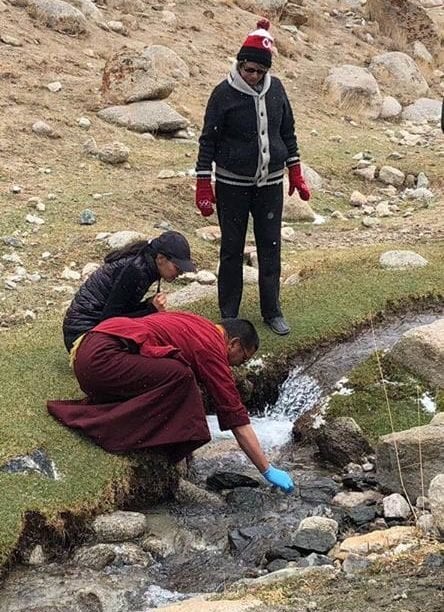
For the first time, Ladakhi citizens in India are able to test for bacteria in their waterways. Trained to test for E. coli, an indicator of harmful disease-causing bacteria in water, on their new IDEXX Colilert equipment, Himalayan Glacier Waterkeeper is leading the region’s first water quality monitoring program to protect its precious waterways for approximately 300,000 native and indigenous people who live there.
The Project
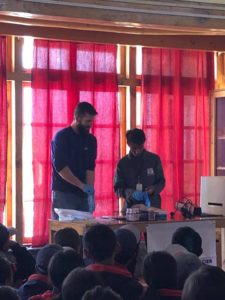
In May, thanks to support from partners at Live to Love—the sponsoring organization of Himalayan Glacier Waterkeeper —Waterkeeper Alliance Recruiting Director Sharon Khan, Field Investigator Christian Breen, and Waccamaw Riverkeeper Executive Director Christine Ellis traveled to Ladakh to continue water quality training and strategic growth planning for Himalayan Glacier Waterkeeper, its Affiliates, and partners. The award-winning Druk Padma Karpo School hosted the Waterkeeper training event for the second time; the first was in 2016. The school and its science department have now officially partnered with Himalayan Glacier Waterkeeper to assist with its water quality monitoring program, providing staffing, lab space, and a reliable supply of solar power.
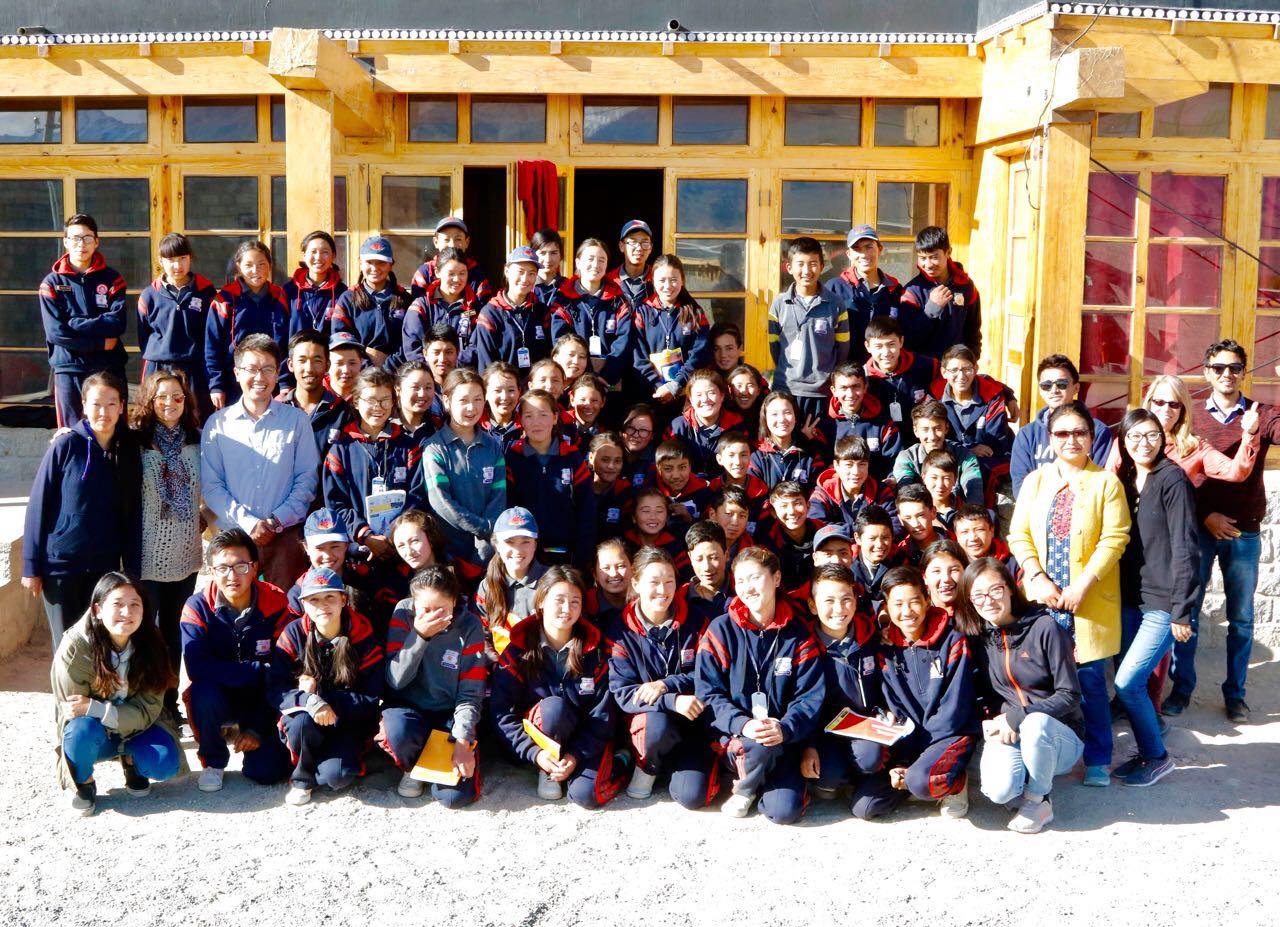
The Himalayan Glacier Waterkeeper team is a key partner in Waterkeeper Alliance’s Himalayan Water Project to build and strengthen a network of Waterkeepers and Affiliates to protect the Third Pole, the source of freshwater for nearly half the world’s population—also known as the Water Tower of Asia.
The Problem
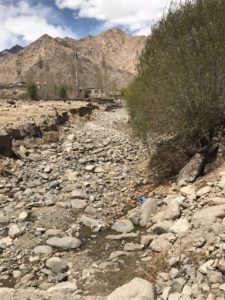
In Ladakh, high amidst the Himalayan glaciers, rivers continue to run dry. This past winter, there was no significant snowfall to replenish the glacial mountains and streams that provide water to villagers and allow them to prepare their land for cultivation in the spring. And with a colder than normal spring in Ladakh, many glacial streams remained frozen, placing additional stress on village water supplies.
“The bucolic villages of Ladakh are where the importance of a clean and ample supply of fresh water is most keenly felt,” said Waccamaw Riverkeeper Executive Director Christine Ellis. “Snowmelt and glacial runoff supply the village’s water needs. Yet, the impact of climate change with reduced snowfall, receding glaciers, and non-seasonal temperatures were obvious during our water sampling visits. The actions that the Himalayan Glacier Waterkeeper, Affiliates, and partners are taking will bring much-needed attention to the water needs of this region and beyond.”
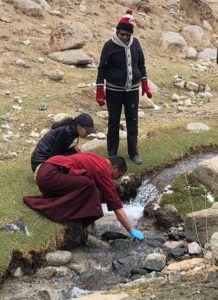
The impacts of climate change are apparent in Ladakh — which is looking more like an arid desert than the lush valley it once was. While water resources dry up, those remaining are increasingly stressed by development catering to a growing influx of seasonal tourists, and the city lacks adequate waste management and a regulated water supply.
Adding to the stresses of climate change, rivers and streams in and around the city of Leh have become littered with waste. Prior to this year, Ladakhi citizens were not able to confirm for themselves if there was dangerous bacteria in these polluted waters. During the training with the team from Waterkeeper Alliance, E.coli was found at multiple sampling sites, showing the urgent need for locals to test the quality of their waterways.
The Next Generation
Himalayan Glacier Waterkeeper has 20 Affiliates protecting stretches of the Indus and Zanskar Rivers and their tributaries. The level of passion and commitment of those who attended the training was made clear as they recounted their efforts to educate community members, organize cleanups, and deal with non-biodegradable waste as best they could.
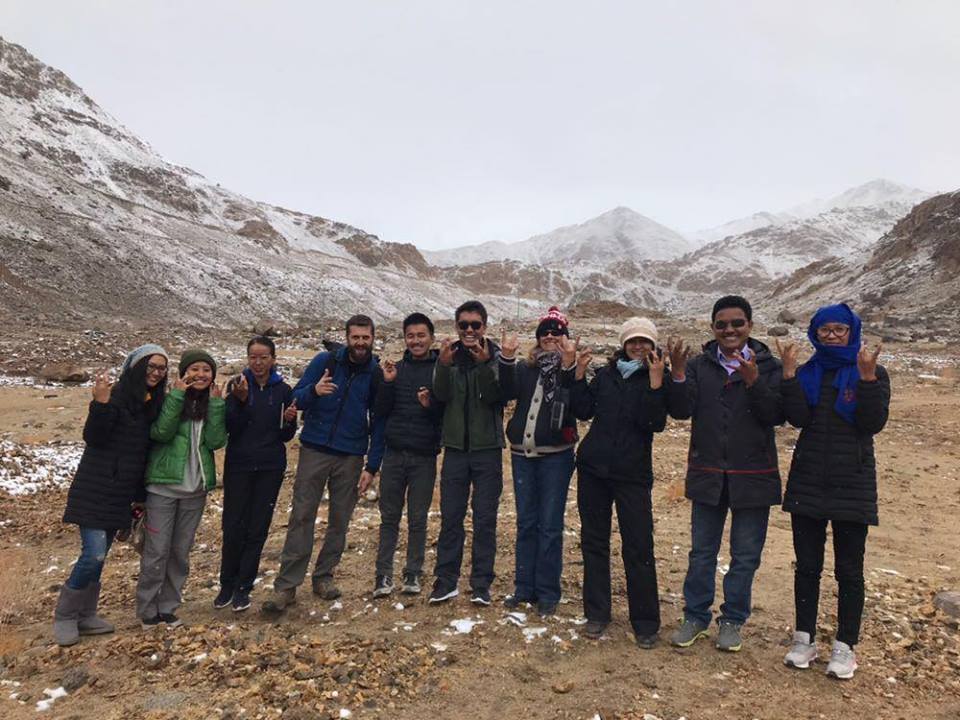
It is encouraging to see a new generation of entrepreneurial and environmental leaders in Ladakh step up to protect their ancestral homes. Five bright Ladakhi youth studying in other parts of India joined the training to not only learn about water quality monitoring, but how to identify and stop the threats to their waterways—using science-based evidence in their advocacy for improved waste management, sustainable tourism, and regulated groundwater extraction among other protection measures.
The students are eager to take lessons learned back to their villages and work with their families and communities to protect their precious waterways. Moreover, some of these students are part of the new Naropa Fellowship, founded by His Eminence Drukpa Thuksey Rinpoche of Ladakh and Dr. Pramath Raj Sinha, founding dean of the Indian School of Business and founder of Ashoka University. We hope this generation of Ladakhi entrepreneurial and environmental leaders will one day soon become Waterkeepers and Affiliates themselves.